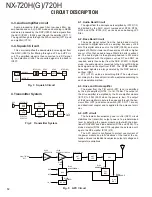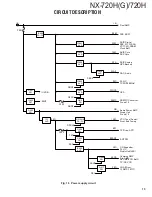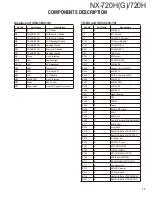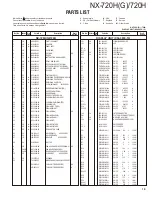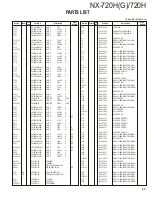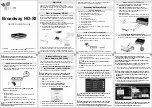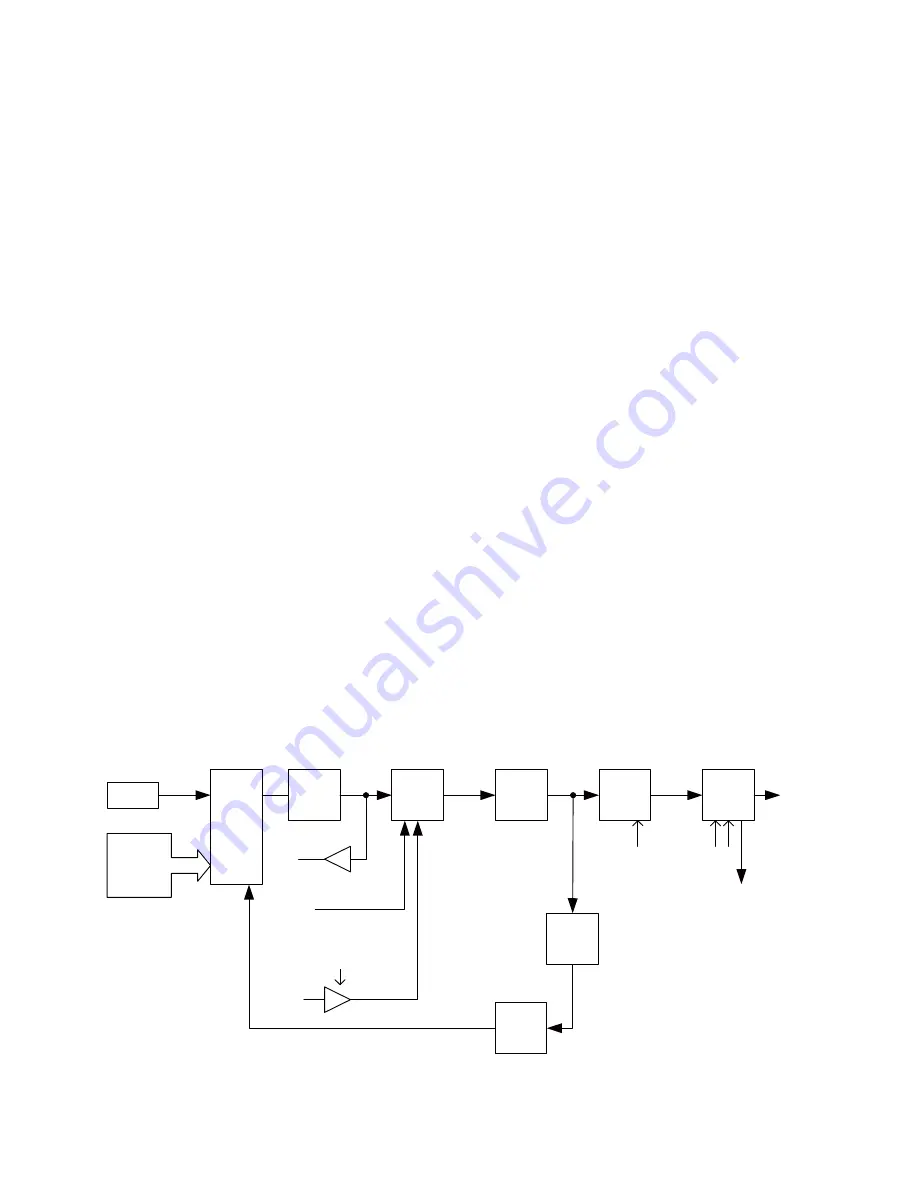
NX-720H(G)/720H
13
Fig. 6 PLL circuit
CIRCUIT DESCRIPTION
5. PLL Frequency Synthesizer
5-1. TCXO (X1)
The TCXO (X1) generates a reference frequency of
16.8MHz for the PLL frequency synthesizer. This reference
frequency is applied to pin 9 of the PLL IC (IC2) and is con-
nected to the IF circuit as a 2nd local signal through the Tri-
pler.
The frequency adjustment is achieved by switching the
ratio of the dividing frequency. The resolution of the adjusting
frequency is approximately 4Hz.
5-2. VCO
There is an RX VCO and a TX VCO.
The TX VCO (Q7) generates a transmit carrier and the
RX VCO (Q6) generates the 1st local signal. For the VCO
oscillation frequency, the transmit carrier is 136 to 174 MHz
and the 1st local signal is 185.95 to 223.95MHz.
The VCO oscillation frequency is determined by one sys-
tem of operation switching terminal "T/R" and two systems
of voltage control terminals "CV" and "ASSIST".
The operation switching terminal, "T/R", is controlled by
the control line (/T_R) output from the ASIC (IC507). When
the /T_R logic is low, the VCO outputs the transmit carrier
and when it is high, it outputs the 1st local receive signal.
The voltage control terminals, "CV" and "ASSIST", are
controlled by the PLL IC (IC2) and ASIC (IC507) and the
output frequency changes continuously according to the
applied voltage. For the modulation input terminal, "VCO_
MOD", the output frequency changes according to the ap-
plied voltage. This is used to modulate the VCO output.
"VCO_MOD" works only when "/T_R" is low.
5-3. PLL IC (IC2)
The PLL IC compares the differences in phases of the
VCO oscillation frequency and the TCXO reference fre-
quency, returns the difference to the VCO CV terminal and
realizes the "Phase Locked Loop" for the return control. This
allows the VCO oscillation frequency to accurately match
(lock) the desired frequency.
When the frequency is controlled by the PLL , the fre-
quency convergence time increases as the frequency dif-
ference increases when the set frequency is changed. To
supplement this, the ASIC (IC507) is used before control by
the PLL IC to bring the VCO oscillation frequency close to
the desired frequency. As a result, the VCO CV voltage does
not change and is always stable at approximately 2.5V.
The desired frequency is set for the PLL IC by the ASIC
(IC507) through the 3-line "SDO1", "P_SCK1", "/PCS_RF"
serial bus. Whether the PLL IC is locked or not is monitored
by the ASIC through the “PLD” signal line. If the VCO is not
the desired frequency (unlocked), the "PLD" logic is low.
The modulation signal of the Low-speed-Data is applied
to pin 23 of the PLL IC (IC2).
The modulation signal that is digital data of a sampling
frequency of 96 kHz is set for the PLL IC by the DSP (IC502)
through the “PLL_MOD” line.
5-4. Local Switch (D16, D17)
The connection destination of the signal output from the
buffer amplifi er (Q11) is changed with the diode switch (D17)
that is controlled by the transmission power supply, HSW,
and the diode switch (D16) that is controlled by the reception
power supply, 50R. If the HSW logic is high, it is connected
to a transmit-side drive (Q102). If the HSW logic is low, it is
connected to a receive-side mixer (Q202).
T/ R
SW
HSW
50
R
D16,17
RKS151KJ
BUFF
AMP
BUFF
AMP
Q11
Q10
2SC5108(Y)F
VCO
Q6,7 MCH3
9
14(7)-H
D4,5 1SV325F
D7,8,
9
,10,11,12 1SV282-F
D15 1SV282F
PLL
Loop
Filter
VCO MOD
ASSIST
CV
TCXO
X1 16.8MHz
SDO1
PCK_RF
/PCS RF
PLLMOD
IC2
SKY72310-362
IC3(2/2)
IC3(1/2)
BD7542FVM
BD7542FVM
50
CS
150C
to 1
st
MIXer
to TX stage
BPF
Doubler
Q5
2SC5108(Y)F
2SC5108(Y)F
Содержание Nexedge NX-720H
Страница 83: ...NX 720H G 720H 83 MEMO ...












